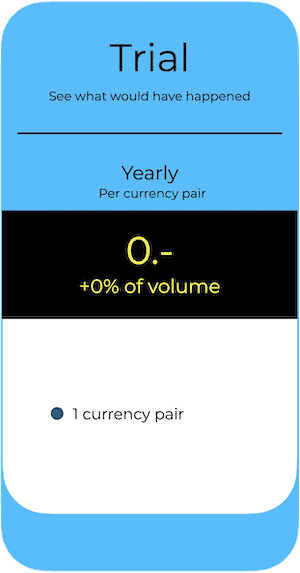Further Developments are Dependent on the USD
Following the sharp decline in the value of the US dollar in spring, which weakened major currencies against the euro, the situation calmed down over the summer. In particular, the Swiss franc has stabilised and regained strength in recent weeks, despite Switzerland being disproportionately affected by the 39% decline in the US economy.
I can see no reason for a significant change to the current calm development in the short term.
The upcoming interest rate cuts are likely to be more of a burden than a benefit for the USD.
Currency Movements are Not Caused by Interest Rate Differentials
The general consensus is that higher interest rates strengthen a currency. However, if this were true, the euro would not have risen by 14% this year despite numerous interest rate cuts, given that US interest rates have remained high. Similarly, the Swiss franc should not be the strongest currency in the world when it has the lowest interest rates. It is incomprehensible to me that this absurdity continues to be repeated, but counterfactual attitudes often persist for a long time.
Interest rate cuts for the USD can have a negative impact because most people believe that a narrowing interest rate differential is bad for the USD. The USD, and the majors against the euro with it, is weak because the fundamentals of the US economy are finally being recognised as such. This is also because international investors have been forced to reorient themselves due to the tariff policy.
Furthermore, the new debt incurred by the US was recognised as a problem that could push the already extremely high level of debt even higher.
If Trump loses in the Supreme Court on the issue of the admissibility of tariffs, there is a risk of major upheaval. Although this decision is still pending, it poses a risk to major currencies (excluding CHF) and stock markets.
There is Still no Agreement Between the US, Canada and Mexico
Six years ago, NAFTA became the USMCA — a free trade agreement with a clause allowing for the reassessment of relations. According to Trump, Canada and Mexico have been taking advantage of the US, and are now facing pressure as a result. It certainly makes sense to curb drug smuggling. Both Canada and Mexico are used by US companies for cost-effective and efficient production. The fact that these jobs have been created in Canada and Mexico rather than in the US is a thorn in Trump’s side.
The USMCA will be up for renegotiation in 2026. It may take Canada that long to gain certainty. Until then, the Canadian dollar will remain under pressure.
The Rise of the Swedish Korona Could Be a Positive Sign
The Swedish economy is a good indicator of global liquidity and economic development. When economic growth slows down, the Swedish krona (SEK) tends to weaken, and when the outlook improves, it tends to rise. Currently, the SEK is rising against both the euro and, above all, the USD. However, in the long term, the SEK is still very weak, so this could be just a temporary correction to the downward trend. Nevertheless, this could be seen as an early indicator of improved economic development.





